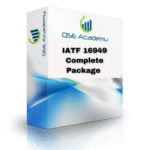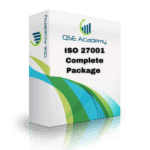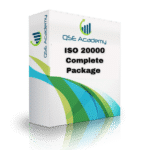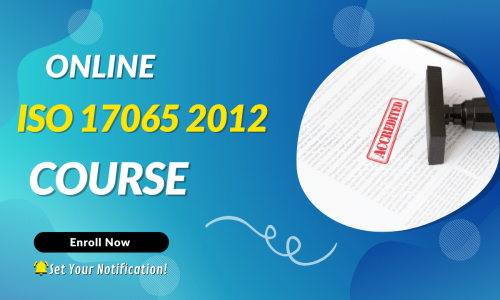IFS V8 Requirements Simplified: A Step-by-Step Guide for ISO Consultants
As a quality manager or a business owner with a business orientation, you know that understanding and implementing the International Featured Standards (IFS) V8 requirements can make a significant difference in the safety and quality of your organization’s food products. In today’s post, I’ll walk you through a simplified, step-by-step guide to help you better understand and implement the IFS V8 requirements.
Step 1:
Understand the IFS V8 Structure the IFS V8 consists of six main chapters, each addressing specific areas of your organization’s operations:
- Senior Management Responsibility
- Quality and Food Safety Management System
- Resource Management
- Planning and Production Process
- Measurements, Analysis, and Improvements
- Food Defense and External Inspections
Take the time to thoroughly read and understand each chapter, as it will serve as the foundation for your implementation process.
Step 2:
Assess Your Current Quality and Food Safety System Before diving into IFS V8 implementation, evaluate your existing quality and food safety management system. Identify areas of non-compliance or gaps that need to be addressed to meet the IFS V8 requirements. This assessment will help you prioritize actions and allocate resources effectively.
For example, consider the case of GoodGrain Inc., a USA-based grain processing company. They discovered that their allergen management program was not robust enough to meet the IFS V8 requirements. As a result, they prioritized enhancing their allergen management system to ensure compliance.
Step 3:
Develop an Implementation Plan An implementation plan is crucial for successful IFS V8 integration. This plan should outline the necessary steps, responsibilities, timelines, and resources required for each action. Make sure to involve relevant stakeholders to ensure buy-in and smooth implementation.
Step 4:
Train Your Team Effective training is essential for successful IFS V8 implementation. This includes not only training your quality managers and food safety personnel but also your production staff, who play a critical role in ensuring product quality and safety.
In the case of GoodGrain Inc., they invested in comprehensive training programs for their entire team, ensuring everyone understood their role in meeting the IFS V8 requirements.
Step 5:
Implement the IFS V8 Requirements With your team trained and a solid implementation plan in place, it’s time to put the IFS V8 requirements into practice. Establish procedures and documentation to support each requirement and continuously monitor progress to ensure compliance.
Remember to communicate any changes or updates to your team and provide ongoing training to reinforce the importance of the IFS V8 requirements.
Step 6:
Conduct Internal Audits and Management Reviews Regular internal audits and management reviews are vital for maintaining compliance with the IFS V8 requirements. These processes help identify any gaps or areas of non-compliance, allowing you to address them promptly.
Step 7:
Prepare for External Audits Lastly, prepare for external audits by selecting a reputable certification body and ensuring all documentation is up-to-date and easily accessible. Be proactive in addressing any non-conformances identified during the audit.
Following these seven steps will set your organization on the path to IFS V8 compliance. Implementing the IFS V8 requirements can be challenging, but the benefits in terms of improved product quality, safety, and customer trust are well worth the effort.
Additional Considerations for IFS V8 Implementation:
Risk Assessment and Management:
One of the key elements of the IFS V8 requirements is the identification, assessment, and management of risks throughout your organization’s processes. Implement a systematic approach to risk management, incorporating tools like Hazard Analysis and Critical Control Points (HACCP) and Failure Mode and Effects Analysis (FMEA). These methodologies will help you identify potential hazards and develop appropriate control measures to mitigate risks.
Supplier Management:
IFS V8 places a strong emphasis on managing your supply chain to ensure the quality and safety of raw materials and finished products. Establish a robust supplier management program, including supplier selection, approval, monitoring, and performance evaluation. Make sure your suppliers are aware of your IFS V8 requirements and are committed to meeting them.
Traceability and Recall Management:
Effective traceability and recall management are crucial components of the IFS V8 requirements. Develop a traceability system that allows you to track raw materials, ingredients, and finished products throughout your supply chain. In addition, establish a recall management plan to handle potential product recalls or withdrawals efficiently and effectively.
Continuous Improvement:
IFS V8 requires organizations to continuously improve their quality and food safety management systems. Establish a culture of continuous improvement by setting performance targets, monitoring progress, and regularly reviewing your systems and processes. Encourage employee involvement in improvement initiatives and recognize their contributions to your organization’s success.
Communication and Transparency:
Clear communication and transparency are critical to successful IFS V8 implementation. Ensure that your organization’s quality and food safety policies, objectives, and procedures are clearly communicated to all employees, suppliers, and relevant stakeholders. Additionally, maintain open channels of communication to address any concerns or issues promptly.
Digital Transformation in IFS V8 Implementation:
Embracing digital transformation can significantly enhance your organization’s ability to implement and maintain compliance with the IFS V8 requirements. Utilizing technology solutions, such as Quality Management System (QMS) software, can streamline your processes, reduce human error, and improve data management.
Consider incorporating digital tools like mobile applications for audits and inspections, automation for routine tasks, and advanced analytics for data-driven decision-making. These technologies can simplify compliance, improve efficiency, and facilitate better communication across your organization.
Employee Engagement and Competency:
Employee engagement and competency are critical factors for successful IFS V8 implementation. Invest in your workforce by providing regular training and development opportunities, and create a culture that encourages employees to take ownership of their roles in maintaining food safety and quality.
Establish a competency framework that defines the knowledge, skills, and abilities required for each position within your organization. Conduct regular performance evaluations and provide constructive feedback to support employee growth and development.
Sustainability and Corporate Social Responsibility (CSR):
While not a direct requirement of IFS V8, integrating sustainability and CSR principles into your organization’s practices can further enhance your reputation and customer trust. Consider incorporating environmental management systems, such as ISO 14001, to improve resource efficiency, reduce waste, and minimize your environmental impact.
Develop a CSR strategy that aligns with your organization’s values and addresses key social and environmental issues. Engage with your community and contribute to local initiatives, demonstrating your commitment to responsible business practices.
Crisis Management and Business Continuity:
IFS V8 highlights the importance of being prepared for unexpected events that may impact your organization’s ability to maintain food safety and quality. Develop a crisis management plan that outlines the necessary steps, responsibilities, and communication protocols in the event of an emergency or disruption.
Additionally, consider implementing a business continuity plan to ensure the ongoing stability of your operations in the face of potential disruptions, such as supply chain interruptions, natural disasters, or other unforeseen events.
Now is the time to elevate your organization’s commitment to food safety and quality. If you’re ready to embark on the IFS V8 journey and need assistance with ISO documentation preparation or expert guidance on implementing the requirements, don’t hesitate to reach out to me. Let’s work together to ensure your organization’s success in achieving and maintaining IFS V8 certification.
Remember, your thoughts and experiences matter! Share your insights on implementing IFS V8 requirements in the comments section below. Let’s learn from each other and contribute to a safer, higher-quality food industry for all.
Are you ready to take your organization’s quality and food safety to the next level? Reach out to QSE Academy today for assistance with ISO documentation preparation and expert guidance on implementing the IFS V8 requirements. Let’s work together to ensure your organization’s success in achieving and maintaining IFS V8 certification.
Looking for More Resources on IFS V8?
If you found this article helpful, explore our premium resources designed to help you achieve IFS V8 certification efficiently:
- 📦 Complete Documentation Package for IFS V8: Get all the essential templates and documents you need for fast, easy implementation.
- 🎓 Online Course on IFS V8 : Enroll in our comprehensive training to master the key concepts and practical steps toward certification.
- 📋 IFS V8 Checklist: Download our detailed checklist to ensure you’ve covered every step of the process.
These resources are tailored to meet your needs and ensure a smooth certification journey. Explore them today and get one step closer to success!






















